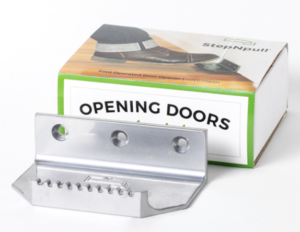
Download a printable version of this checklist here.
For many businesses, there has been no greater challenge than navigating the coronavirus pandemic. Teams came together. Companies pieced together a survival-mode game plan. In a mess of uncertainties, we proved resilient, adapting quickly to the ever-changing news.
Business, as usual, will look very different after the pandemic. And for gatekeepers, reopening for business will take unprecedented planning.
To help you prepare for a smooth transition, we’ve put together a post-pandemic reopen checklist. From sanitizing surfaces and training staff to installing smart sensors and glass partitions, think of these operational tips as a conversation starter between you and your team. The list isn’t exhaustive—every industry faces a unique set of challenges, but we’re here to help.
1. Step Up Sanitation Procedures
Just because governments are easing restrictions, doesn’t mean we’re not collectively vulnerable to a second wave of COVID-19 infections. Transmission of the virus will continue. The cleaner your facility – the lower the probability of spreading SARS-CoV-2. From disinfecting high-touch areas to educating staff about the importance of regular handwashing and wearing PPE, the CDC’s Cleaning and Disinfecting Your Facility and OSHA guidelines are a must-read.
2. Create Health Safety/Educational Messages (Public and Staff)
Employee board notices that say, “Stay home if you’re sick.” Stand-alone signage in the lobby with new visitor and social distancing policies. Line stripes and directional arrows for foot traffic flow. Parking lot markings for curbside pickups. HR guidelines updated with pandemic-related protocols. It’s a lot to take in. The more cohesive your communication, though, the easier it will be on everyone.

3. Automation yes. Touch no.
Fobs. Foot-operated door openers like StepNpull. Touchless faucets and soap dispensers. Voice and motion-activated lights. Voice-activated elevators. Installing smart sensors will future-proof your organization. Failing to evolve will be more costly down the line.
4, Lever Handles Over Knobs
Coronavirus can cling to surfaces, making doorknobs a hotspot for pathogens and bacteria. Fingertips pose an infection risk as people often touch their face. Unlike traditional doorknobs, ADA approved lever handles are easier to manipulate with the back of your hand or elbow.

5. Virus Shields
If your staff interacts closely with customers throughout their shift, it’s now considered a high-risk transaction. Shields like plexiglass sneeze guards and glass partition screens block virus-containing droplets.
6. Air Filtration: High MERV-rated Filters
HVAC systems cannot prevent the transmission of coronavirus. However, high-capacity HEPA filters can capture a portion of airborne virus-sized particles. High-level MERV products may require a more substantial fan to push the air through. A professional can provide the best air filters (and systems) for your facility.
7. Curbside Pickup & No-Contact Delivery
Are you operating a grocery, a restaurant, or a pickup and delivery service? FDA and CDC guidelines help prevent cross-contamination and virus transmission between your drivers, customers, and staff: from staging areas and contactless interactions to the latest touchscreen protocols.
There are silver linings. Our chambers, towns and building community offer an abundance of pandemic-related resources – including tools for small businesses from the CDP.




